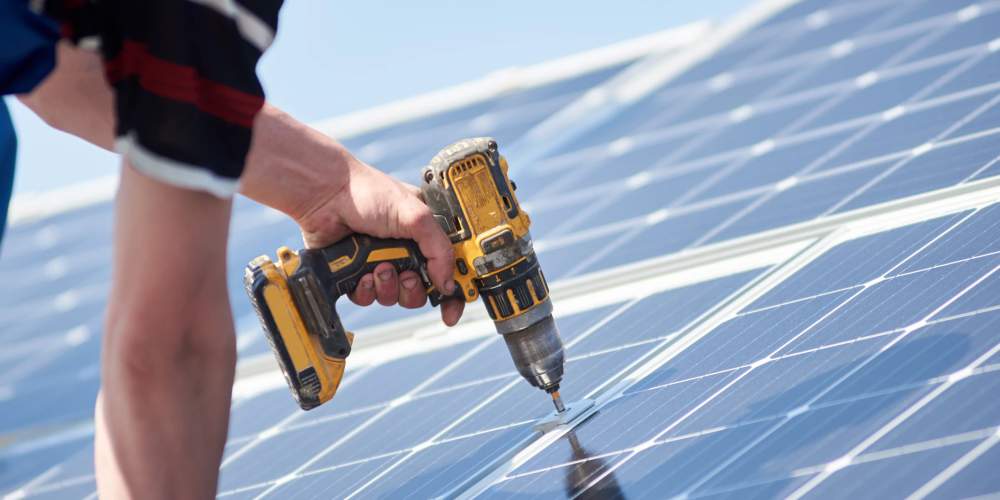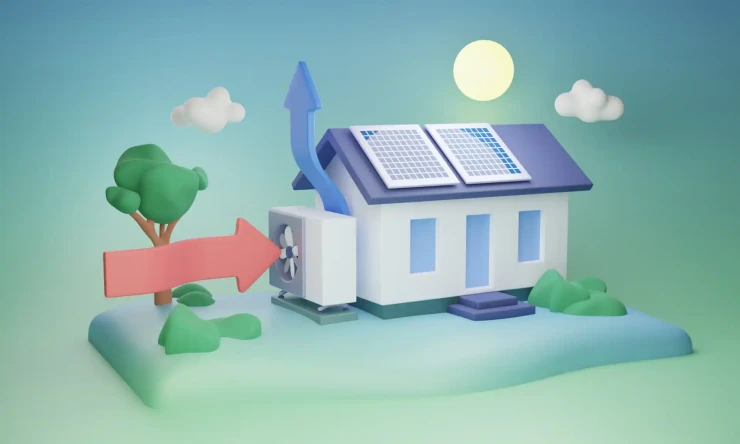
Property development is one of those areas where carbon emissions seem to be growing, but there are several ways in which this can be offset if you really think carefully about how you go forward with your plans.
In 2018, almost 40% of the C02 emissions from energy came from construction and associated operations. Sadly, in the last few years, these levels have increased even further. We are all responsible for our own carbon footprint, and nowhere is this more important than in the field of property development.
There are four main elements of creating property development with green credentials. These are materials, energy, water, and health.
Designing a green property
Energy and water consumption are high on the scale for damaging green credentials, so designing a property that uses low-level lighting schemes, energy-efficient appliances, solar power and heat pumps already puts you ahead of the game. Combine this with low-flush toilets and low-flow taps, rain harvesting and natural garden irrigation for reducing the amount of water your property uses and recycling what it does.
The main benefits of incorporating green credentials into your property development are decreased carbon emissions, energy and water consumption and waste, and using safer materials that reduce access to harmful toxins. These benefits each have a tangible knock-on effect on your immediate surroundings as well as transferring into positives for the planet.
Many eco-homes are built to be self-sufficient, using natural resources and requiring lower ongoing maintenance. As people become more aware of their own carbon footprints and their effect on the environment around them, living more sustainably is one of the things they look for when purchasing a property. This is especially true of millennials, who have been brought up amongst the desire to be as eco-friendly as possible and have made it part of their daily lives.
With energy prices soaring and resources lessening, the savings made on both the pocket and the planet, make eco-friendly property development a must, and highly attractive to planners and purchasers.
COMPARE PRICES FROM LOCAL INSTALLERS
Compare prices from local companies fast & free
Enter your postcode to compare quotes from leading professionals. We promise to keep your information Safe & Secure. Privacy Policy
Examples of green properties
When planning the design for your property, it is also a good idea to ensure you are not damaging any of the surrounding wildlife habitats. Keeping as much grass and greenery in the area as possible will not only mean you are not messing with the natural ecosystem, but it will also reduce the possibility of flooding.
If you are undertaking a major property development but are keen to also make it as eco-friendly as possible, there will be high financial costs involved, even if they are outweighed by the reduced costs to the environment.
Many mortgage and finance companies will look favourably on buildings that show a concerted effort to decrease the impact on the planet and will offer bridging loans enabling you to do the work required and then recoup the money to pay back when the property is sold.
Green credentials in building
Choosing recycled, reclaimed or renewable materials from which to build the property, including plastics, wood and even things like hemp insulation, will cut down on demand for the finite supply of raw materials. This level of sustainability also reduces the environmental impact of the extraction and processing of the raw materials.
You should also think about the toxicity of the materials you are using. Those that have low VOC content, are free of emissions, and are moisture resistant, will automatically make for a healthier building, protecting the people who live in it by improving the indoor air quality and allowing the building to breathe.
If you can buy all these items locally, you will additionally reduce transport emissions, and should be able to source further materials quickly and easily too, should you find you need to.
Management and futureproofing
Look at the life cycle analysis of the materials you are using and at the property development as a whole. This will look at the associated costs of the project, as well as how the decisions you make now will affect the longevity of what you are building.
Assess the green credentials of your plans and find out if they will actively futureproof the property for years to come. The durability of what you use is even more important than the sustainability and the costs, or else the latter two will fall by the wayside anyway.
Installing solar panels, under-floor heating or heat pumps will only be as successful as the people who use them. So, actively educating on the benefits of these methods and appliances is just as vital as including them in the first place.
The Government is actively looking at ways we can be Net Zero by 2030, so building properties now that will conform to future legislations is paramount.
Benefits of eco-friendly property development
One of the most famous green property developments in the UK is the Eden Project in Cornwall. This was designed at the start of the millennium as a way of building a relationship between people and the natural environment, making them more aware of their surroundings. The stunning and iconic biomes house an enormous indoor rainforest and a Mediterranean flower garden, celebrating plants and recycling natural resources such as rainwater to feed them.
The Zero Carbon building in Hong Kong is another great example of how architecture can be transformed through the use of solar panels, rainwater harvesting and a green roof. It is completely carbon neutral, energy efficient, and is surrounded by a green park which provides a welcoming space for the public to enjoy. Not what you would expect from a cosmopolitan metropolis, perhaps.
Final thoughts
Actively looking at ways to make your property development more eco-friendly may well excite your imagination, as much as being especially good for your environmental surroundings.
Be a considerate house builder and join the Considerate Constructors Scheme for help and advice on what you can do to improve your green credentials. This scheme focuses on respecting the community, caring for the environment, and valuing your workforce. If you keep all these in mind when building your property, you won’t go far wrong.
Find a local installer
Welcome to the biggest directory of UK renewable energy companies





























